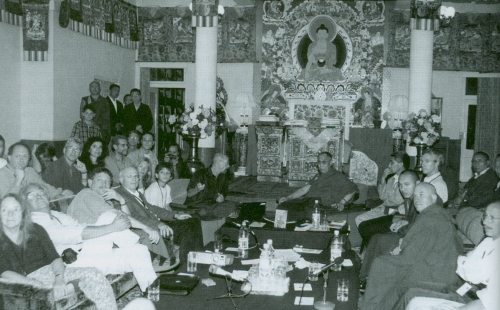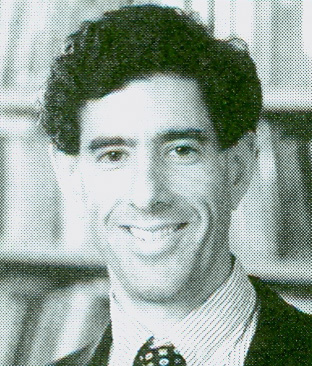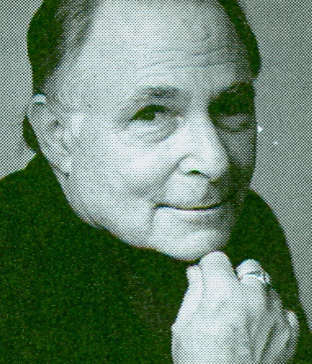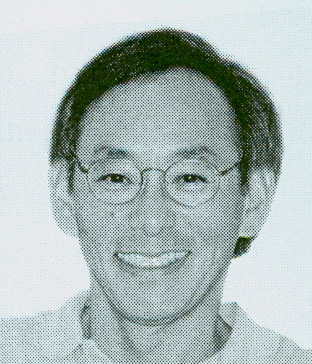
“Someone ought to wire the Dalai Lama up to an EEG machine to see exactly what’s going on.”
It was an offhanded remark, made at the end of a Vipassana retreat by a gung-ho, fresh-out-of-college meditator, and as he calked more, it became apparent what he wanted was a shortcut to enlightenment. It was hard not to stumble over his lack of tact. But in fact, even as he spoke, in scientific labs across the country there was already a research initiative underway to study advanced Tibetan monks and seasoned Vipassana teachers. And the studies—sponsored by The Mind and Life Institute, a Boulder, Colorado-based nonprofit organization—have the input and full support of the Dalai Lama.
It is even possible that at that very moment, in a stateof-the-art brain science lab at the University of WisconsinMadison, a Tibetan monk was lying on a hospital gurney with his head in the tight-fitting tube of a functional Magnetic Resonance Imaging (fMRI) machine. As the monk generated compassion and other meditative states, the fMRI would record images of the cellular structure and functioning of his brain. After finishing the fMRI, he would be whisked down the hall to repeat the same protocol while hooked up to a high-resolution EEG. Analysis of the test results would keep a team of Ph.D.’s busy for months.
There are, however, significant differences between the experiment the enthusiastic meditator had in mind and the scientific work Mind and Life is doing. Mind and Life isn’t trying to discover the neurological basis of nirvana but rather to investigate the brain mechanisms at work during various meditative states, and gain insight into the impact of meditation on our thoughts and emotions. It may then be possible to objectively demonstrate the benefits of certain Buddhist contemplative practices—part of Mind and Life’s ongoing efforts to explore how science and Buddhism, as equal partners, can help each other.
Over the past sixteen years, Mind and Life has taken a practical approach to the partnership. Best known for its conferences—dialogues between the Dalai Lama and prominent Western scientists—Mind and Life has managed to avoid the partisan conflicts that often plague such encounters. “Mind and Life isn’t trying to bolster Buddhism,” explains R. Adam Engle, cofounder of the institute and chairman of the board, “but is looking to create a true collaboration between Buddhism and science to benefit humanity.”
Among those who see great potential in the partnership is Evan Thompson, co-author of The Embodied Mind and a close associate of the late Francisco Varela, the innovative cognitive scientist who was Mind and Life’s other co-founder. “While the conversations Mind and Life is facilitating between scientists and Buddhists are very important,” Thompson says, “dialogues have been done before. What’s most exciting is that they’re creating something new—a fusion of science and Buddhism that’s appropriate for Western culture.”
In 1992, when Mind and Life researchers first set out to assess the effects of decades of intense medi tation and spirirual practices, they sent a team of equipment-toting scientists up the Himalayan slopes above Dharamsala, India, to meet with accomplished Tibetan yogis in their secluded meditation huts. There were a few cross-cultural misunderstandings; one monk, for instance, decided against being outfitted with EEG electrodes when the scientists couldn’t tell him how the test might affect his subtle energy body. Few native Tibetan monks traveled to the U.S. for more extensive testing. But that initial project paved the way for the fruitful collaborations that have developed since. Today, the Mind and Life team has created arguably the best—and certainly the most sophisticated—tests ever designed for measuring the long-term results of a yogi’s mind training.
Currently, the institute has in-depth research projects under way at the University of California at San Francisco Medical School, the University of California at Berkeley, and Harvard University, as well as the work in Richard Davidson’s lab at the University of Wisconsin. Davidson is one of the country’s leading affective neuroscientists. Though his Training and Studying the Mind Project has tested only a few advanced practitioners so far, the preliminary results are impressive. One Tibetan Buddhist lama, code-named Oser inDestructive Emotions, Daniel Goleman’s new book, demonstrated a clear, measurable ability to assume six different meditative states—including one-pointed concentration, visualization, pure awareness, and compassion—on command. In a separate test, while generating compassion, Oser showed a dramatic increase in electrical activity in the brain region associated with positive emotions. Davidson’s lab had already found that high levels of activity in that region are associated with feelings of happiness, enthusiasm, joy, and alertness. While the results aren’t yet conclusive, they suggest the vast potential of dharma practice for creating stable, positive states of mind.
At the Human Interaction Laboratory at UC San Francisco Medical School, Paul Ekman, a widely recognized expert on emotions and facial expressions, has also achieved remarkable results testing well-trained meditators. When images offaces with specific expressions were quickly flashed on a screen, Oser and an experienced Western meditator were asked to read the emotions the faces expressed. Both demonstrated an extraordinary level of accuracy—an indication of compassion and emotional sensitivity. People who are skilled at recognizing emotions are also more openminded, reliable, and efficient, Ekman’s previous research found. Oser’s abilities, along with a transformative encounter with the Dalai Lama, inspired Ekman to launch the Extraordinary Person Project to study exemplars of empathy, compassion, and other desirable qualities.
The number of “extraordinary persons” who qualify for testing is obviously limited. Bur the results of Mind and Life’s research are potentially far-reaching. “Even if we can only demonstrate what’s possible for one person,” says Richard Davidson, “it shows the capacity of our species, and it helps us better understand the far reaches of neuroplasticity.” Neuroplasticity—the ability of the brain to generate new nerve cells and neural connections, thereby altering emotions, behavior, and perceptions—is the major story in neuroscience of the past decade, overturning basic assumptions about brain structure and functioning. If research can show that meditation changes brain structure in ways that increase health and happiness, the implications will be enormous. What Buddhism brings to the West is its profound understanding of the mind, points out B. Alan Wallace, a Mind and Life board member and Buddhist scholar. “Buddhism presents many theories about the functioning and potential of human consciousness that can be tested empirically,” he writes in Tibetan Buddhism from the Ground Up. “If many of these hypotheses are confirmed by sound and thorough investigation, we may need to radically alter our interpretation of both scientific and religious knowledge.”
One of Mind and Life’s goals is to create educational programs based on its experimental findings. A key initiative for this is Cultivating Emotional Balance, a project that originated in Ekman’s lab. The goal is to develop a program to reduce destructive emotions that combines mindfulness practice and elements of Western psychology—and that could be taught to people with no background in meditation. Ultimately aimed at people in high-stress jobs, it is being tested on high-school teachers. “We don’t exactly know what form the final curriculum will take,” Engle says, “but we do know it will be completely nonsectarian.” Once educational programs are in place, Mind and Life will have realized an important piece of its mission: to show that science and Buddhism can inform each other to alleviate suffering. Eventually, the Institute hopes to work with non-Buddhist contemplative traditions as well.
Mind and Life’s beginnings can be traced to the Dalai Lama’s lifelong scientific curiosity. Naturally gifted with a mechanical mind, as a teenager His Holiness fixed movie projectors, clocks, and old cars, without the help of instruction manuals. At a 1983 symposium on consciousness, while talking to the pioneering neuroscientist Francisco Varela, a student of Chogyam Trungpa Rinpoche, the Dalai Lama expressed interest in meeting with scientists. Coincidentally, Adam Engle, an entrepreneur and longtime student of Lama Thubten Yeshe, independently began to pursue just such a forum. When Engle and Varela learned of each other’s efforts, they joined forces—Engle as organizer and fundraiser, Varela as scientific coordinator. The result was “Mind and Life I: Dialogues between Buddhism and the Cognitive Sciences,” held in 1987 at the Dalai Lama’s residence in Dharamsala.
Since then, there have been nine more conferences, on topics ranging from “Sleeping, Dreaming, and Dying” to “Altruism, Ethics, and Compassion” and, most recently, “The Nature of Matter, The Nature of Life,” in Dharamsala last October. The meetings, which typically last five days, are small, invitation-only affairs. No journalists are allowed, although the proceedings are taped, and most have resulted in books. (Destructive Emotions, recapping the 2000 conference, has just been published; The New Physics and Cosmology, covering Mind and Life VI in 1997, is due out later this year.) “Keeping the meetings private creates a freer atmosphere,” explains Anne Harrington, a History of Science professor at Harvard and a Mind and Life board member. “It makes it easier to take intellectual—and even emotional—risks. This enables a sense of trust and camaraderie that strengthens Mind and Life’s work beyond just the week in Dharamsala.”
In September 2003, Mind and Life will hold its first public meeting: a two-day event at the Massachusetts Institute of Technology, on “Investigating the Mind: Exchanges between Buddhism and Biobehavioral Science” (see www.investigatingthemind.org). The focus will be joint research possibilities in three areas of interest to both Buddhists and scientists: attention, emotion, and imagery. The Dalai lama will participate in all sessions.
While mind and life has always been a collaborative effort, two key figures remain central to its activities: Adam Engle, the chairman, and His Holiness the Dalai lama, the honorary chairman. If Engle (who has a law degree from Harvard and an M.B.A. from Stanford) is the producer, director, and CEO who built Mind and life, the Dalai Lama is unquestionably the main attraction. The participation of His Holiness has allowed Mind and life to flourish and do elite-level work. Scientists consistently report how impressed they are with the acuity of the Dalai Lama’s questions and his ability to follow rigorous scientific discussions, as well as his open-mindedness and his radiance. It is this last quality more than any other that draws exceptional scientists to Mind and Life meetings. Eric lander, an MIT researcher who is one of the leaders of the Human Genome Project, acknowledges that he would not have participated in the conference had it not been for the Dalai Lama. “Spending a week with the Dalai Lama was inspiring,” agrees Steven Chu, a Nobel Prize-winning physicist at Stanford University. “The experience helped me remember why I’m a scientist.”
For Paul Ekman, contact with the Dalai Lama had a powerful, life-changing effect. “I wasn’t interested in Buddhism before I went to Dharamsala,” Ekman says, “yet I left taking on a project that is centered around mindfulness training. When His Holiness asked someone to develop {what became} the Cultivating Emotional Balance project, I somehow felt he was asking me directly, and I couldn’t say no. Whenever I question that commitment now, I think of him and know I must continue working on it.”
Given the preeminence of the Dalai Lama’s role, could Mind and Life survive without him? “There’s no doubt he’s been critical to whatever success we’ve had,” Engle concedes, “but we’re working to create dialogues and a body of research that are robust enough to be bigger than anyone person. His Holiness wants that, and we know the interest among scientists is there. This is very fertile ground. We have an extraordinary opportunity here, and we’re trying to make the most of it.”
Marshall Glickman is the author of Beyond the Breath: Extraordinary Mindfulness Through Whole-Body Vipassana Meditation.

Richard Davidson
Like most affective neuroscientists, Richard Davidson, a pioneering and internationally renowned researcher who directs the W. M. Keck Laboratory for Functional Brain Imaging and Behavior at the University of Wisconsin-Madison, has spent the bulk of his career studying depression, anxiety, and phobias. But unlike most of his colleagues, Davidson now also investigates compassion, happiness. and mindfulness.
Davidson’s added focus on positive emotions isn’t the result of a midlife epiphany. He has been a dedicated Vipassana meditator since college, and in fact did some research on meditation back in the 1970s, while getting his Ph.D. at Harvard. His professional return to meditation in 1992 was the result of his involvement with Mind and Life, along with technological improvements. “Until recently, meditation was very difficult to study because our tools just weren’t subtle enough:’ Davidson explains.
Davidson’s lab is one of the most advanced in the world for observing real-time activities in the brain. His two essential pieces of equipment are the functional MRI (fMRI), which makes precise video records of changing activity in the brain, and a very sophisticated electroencephalogram (EEG) that records electrical activity. Most EEG studies rely on equipment with between 6 and 32 sensors; Davidson’s lab has EEG caps with up to 256 sensors, allowing pinpoint accuracy in monitoring changes deep within the brain.
In addition to testing advanced Buddhist practitioners, Davidson’s facility has been used to research the effect of an 8-week, 45-minute-a-day mindfulness practice on beginners. Carried out with the help of Jon Kabat-Zinn, then at the University of Massachusetts Medical Center, the study found that participants had reduced anxiety, improved immune systems, and increased activity in the area of the brain associated with positive emotions such as joy, enthusiasm. and good will. Although excited about the results, Davidson cautions that these are preliminary findings based on a small group of subjects. Still, he sees the outcome as more evidence that a collaboration between Buddhism and science can be used to “transform the brain and the body to make us happier and healthier.”

Paul Ekman
No one reads a face better than Paul Ekman. A professor of psychology at the University of California at San Francisco Medical School, Ekman has been studying the way facial expressions reveal emotions for nearly forty years. Ekman made his scientific mark in the late 1960s by showing the universality of emotions in research with isolated Stone Age-culture tribes, mostly in Papua New Guinea. Since then, he has continued to refine his understanding of the expression, evolution, and physiology of emotions, along the way developing the Facial Action Coding Systema map of facial expressions so detailed that it is possible to write exact notations for any given affect. This system of facial mapping is used by scientists throughout the world, as it helps corroborate brain-activity tests and can be used to crosscheck patient reports. A fake smile, for instance, is anatomically distinguishable from a genuine one, allowing a researcher to verify the accuracy of a subjecfs verbal account. (There are eighteen different types of smiles, Ekman has found.)
Before Ekman was invited to Mind and Life VIII in Dharamsala, he had little interest in Buddhism and was skeptical of reports about scientists who had been changed by their meetings with the Dalai Lama. As it turned out. Ekman’s own first encounter with His Holiness was profound. In Daniel Goleman’s most recent book, Destructive Emotions, Ekman relates that he had “what some people would call a mystical, transforming experience.”‘ A private meeting with His Holiness left Ekman “inexplicably suffused with physical warmth … a wonderful kind of warmth throughout my body and face. It was palpable. I felt a kind of goodness I’d never felt before.”‘
The effects of that meeting continued long after the conference. Ekman’s connection with the Dalai Lama helped dissolve much of his long-held anger, which Ekman traces to a very difficult relationship with his father. “About once a week for the last fifty years, I’ve had an anger attack that I regretted,” Ekman says. But after his encounter with His Holiness, “I didn’t even have an angry impulse for the next four months, and no full episode of erupting in anger for the whole of last year.” Ekman left Dharamsala a changed man, professionally as well as emotionally: his research took a new direction after he agreed to administer the Cultivating Emotional Balance project, a key Mind and Life initiative.

Steven Chu
In the world of science, Stanford professor Steven Chu is a star. He was a co-winner of the 1997 Nobel Prize for Physics for devising a way to study atoms and other elemental particles with unprecedented detail. The method involves cooling atoms to temperatures very close to absolute zero, which dramatically slows molecular movement. Once slowed, minute particles can be “trapped” with optical tweezers that Chu and his scientific team invented. Chu’s innovations can be applied to a variety of fields, including his current focus: the physical aspects of living cells and DNA.
Chu’s knowledge of the microstructures of life made him an essential contributor to Mind and Life’s October 2002 meeting, “The Nature of Matter, The Nature of Life.” The key question Chu addressed was this: Is it possible to accurately predict macro events if we understand life with great precision at the micro level, or will there always be limits to our understanding? Chu’s supercondensed answer: “Maybe we’ll know in three thousand years, but if I had to say now, my guess is that there will be always be limits.”
While Chu says he “finds aspects of Buddhism very appealing,” that alone probably would not have motivated him to participate in the conference. In 1995, Chu briefly met the Dalai Lama at Stanford and was eager to spend more time with him. It was the Dalai Lama’s approach to ethics that Chu found most helpful during his time in Dharamsala. “I was very impressed with his ability to be guided by moral principles while still making ethical decisions on a case-by-case basis,” he says. “Science regularly opens up new frontiers and creates new moral dilemmas. This requires us to carefully consider each situation, and not just respond automatically.” For that reason, Chu thinks it’s important for everyone to become educated about the scientific facts in each case so that we can make wise collective decisions. “Science is neither good nor bad, right nor wrong,” he points out. “But what we do with science can be tragic or great.”